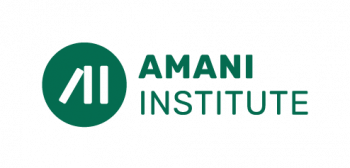Working to help others isn’t just altruistic, it’s a smart professional decision. The nonprofit sector employed about one out of 10 Americans in 2010, making it the third-largest labor force in America. Between 2000 and 2010, through two recessions the nonprofit sector grew at 2.1% annually, while for-profit jobs declined 0.6% per year.
While there are many educational opportunities in this field, there’s good reason to be cautious about spending too much money on an expensive degree if your focus is social entrepreneurship. Nonprofit professionals generally earn less than their counterparts in private enterprise.
ABOUT THIS SERIES
: What is your best, most direct, and customized route to gaining the skills, confidence, and connections needed in today’s business world without the time or cost of traditional education? To answer the question, Fast Company posed itself a challenge: Create an independent college degree equivalent for $10,000 or less.
Besides, according to a recent survey of social sector executives, real-world skills are more important than degrees in this field. “Skills are best learned in an immersive environment–i.e., in the country or context that is being studied,” said the leader of one charity. And another said, “I am no longer impressed by academic backgrounds or credentials, and I pay little attention to them.”
So what is the self-directed learning path for those whose passion is healing the environment, poverty, human rights, education, housing, health, international development, and more? Here are our picks.
HYBRID
A notable resource specific to this space is TechChange, which has held hundreds of in-person small-group workshops, combined with video-based and interactive delivery designed with some game mechanics, simulations-based group projects, and live video chat with instructors. These cover topics such as “mobiles for international development,” and “intrapreneurship–innovating from within.”
Their open courses draw an international audience of participants interested in social media and social change. They also create custom courses in partnership with organizations such as the United Nations, World Bank, USAID, UNICEF, Red Cross, U.S. State Department, training student leaders in Pakistan, civil society leaders in Sudan, or international aid workers.
Nick Martin, one of the founders of TechChange, saw a growing need in his field for continuing professional education. “We took dozens of online courses from all kinds of providers and found that most of them were pretty awful. So we set out to build a model that was more social, interactive, scalable, and suited to the needs of the social change community.”
Benefits: updated and highly relevant content, an international network of students and alumni.
Drawbacks: no certification, no hands-on component, and aimed at mid-career professionals, not beginners.
Cost: around $400 per course.
OFFLINE
Amani Institute
Roshan Paul worked for several years at Ashoka Institute, the organization that, with its founder Bill Drayton, is most credited with popularizing the idea of the “social entrepreneur.” He realized that there was a gap between traditional university programs and the habits of mind and practical skills necessary to excel in combating global challenges.
He designed Amani Institute to fill that gap. (Full disclosure: I’m a member of the advisory council.) Rather than have a classroom-based program paired with a semester or summer of volunteering abroad, he flipped the script by locating the program in Kenya and focusing on an internship placement with an organization of interest, combined with experiential and group learning and ongoing mentoring, designed to deliver the equivalent of a two-year master’s degree in just five months. Courses cover basics from design thinking, to leadership and management science and technology for social change, through some more left-field topics like nonviolent communication.
Besides the main program, which awards a post-graduate certificate in Social Innovation Management, they offer a Summer Semester for undergraduates in partnership with George Mason University and short-term intensive training. All combine experiential field work with classroom teaching.
“By being located in not a super comfortable part of the world, we are pushing students out of their comfort zone,” says Paul. “We’re aimed in particular at adult learners: We focus on learning by doing, interactions with mentors and peers, being pushed to the edge of your comfort zone, and doing as much personal growth as professional development.”
Benefits: Immersive learning designed in consultation with experts in the field. They currently have over 30 agreements with organizations in the social change sector to consider applications from graduates of the program.
Drawbacks: The program is tiny, the model is still unproven, not much of an alumni network to draw on. Also, it’s geared to those who already have a college degree.
Cost: $7,000 if you live outside Kenya for the full one-year certificate program.
ALTERNATIVES
Be Social Change, a New York City-based nonprofit, offers workshops covering practical skills for social entrepreneurs, for around $30, plus networking events. Volunteering for a relevant organization is the best way to gain skills and exposure to the social sector at the entry level. Idealist.org is a longstanding resource and community with over half a million members and over 100,000 organizations posting opportunities and events.
Online
MOOC platforms such as Coursera offer online courses from schools on topics related to environmentalism, health, and development for free.
Shoot the Moon
Want to change the world? Just go. Go to Haiti. Or Rwanda. Or the Syrian refugee camps in Jordan. Hotspots around the world attract an informal global network of aid workers, activists, and social entrepreneurs. The barrier to entry is nil–it’s sticking with the work that’s hard. Maggie Doyne’s gap year after high school traveling around the world led to her using her $5,000 life savings to found a now-thriving school and orphanage in Nepal.




